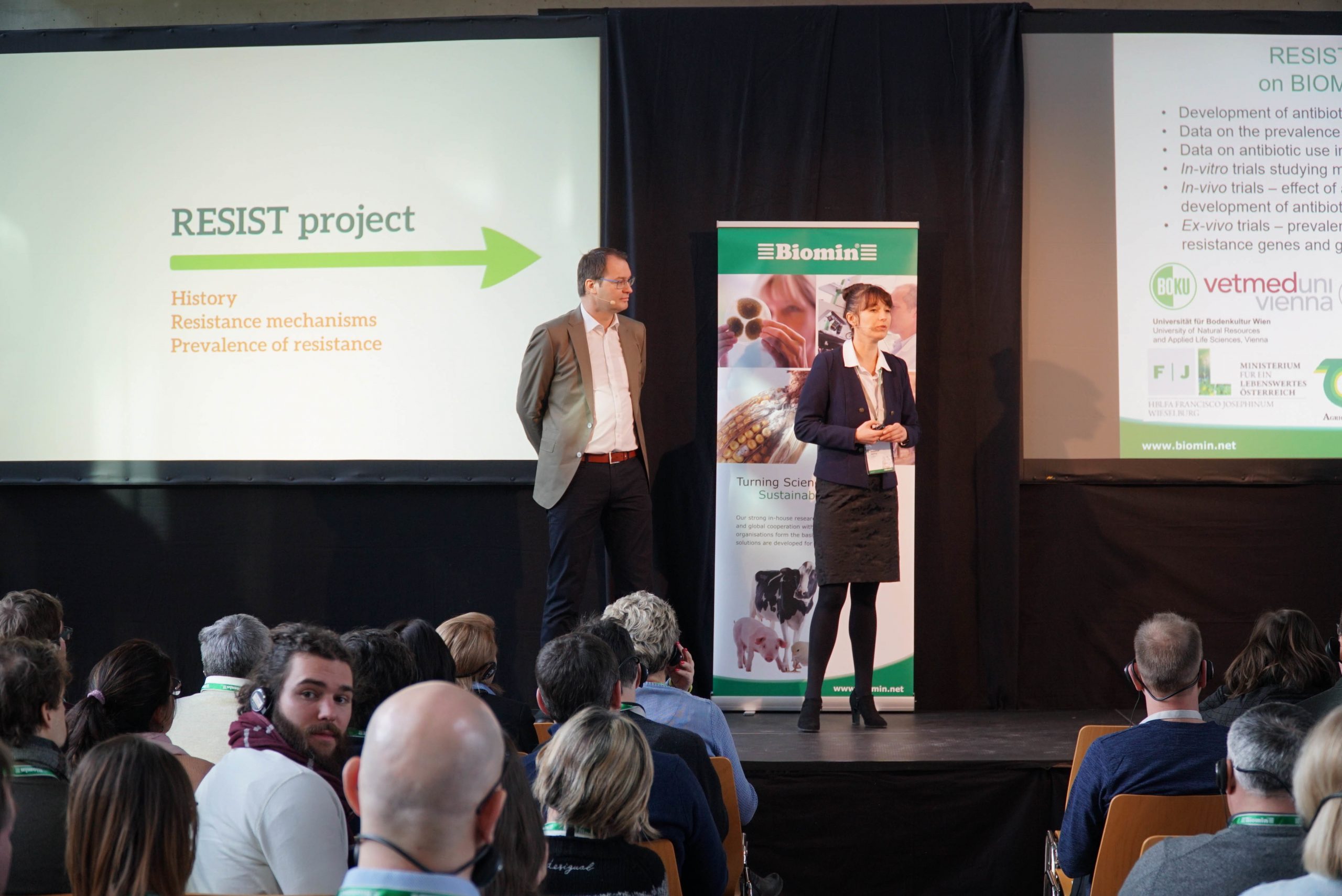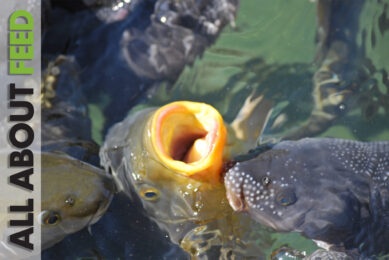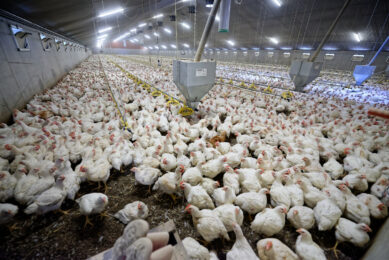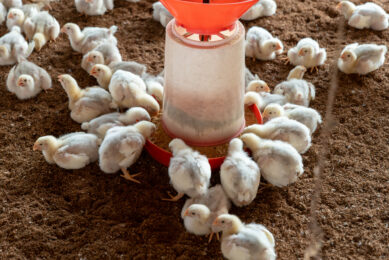Piecing together optimal pullet rearing

Antibiotic usage in the layer industry is relatively low, compared to other poultry sectors. However, that doesn’t mean that moving towards antibiotic free production is easy. Especially taking into account the challenges posed by moving to cage-free systems, the puzzle only gets more complicated.
Solving the antibiotic free production puzzle in layers, that was the main theme of the recent Biomin symposium in Austria. It followed the format of earlier symposiums for broilers and pigs, but now touched upon a more difficult challenge. Antibiotic usage in layers is low, mainly contributing to the pullet rearing phase and – more than in other poultry sectors – used as a cure rather than as a preventative measure or even as growth promoter. Further reduction or even total abolishment of antibiotic usage has to include a close look at all facets involved.
Agriculture is blamed for antibiotic resistant bacteria
The outline of the symposium was clear; everyone involved in livestock production has to contribute his or her share in reducing antibiotic usage, because – if you like it or not, even when it is not 100% true, agriculture is blamed by the public and even legislators as being the main contributor to antibiotic resistant bacteria.
Layer industry contributes to antibiotic resistance problem
The bad news is that the layer industry is indeed contributing to the world resistance problem. Not so much as other sectors and far less than resistant bacteria as a consequence of improper antibiotic usage in human healthcare, which is the main culprit to begin with, but up to 25% of E.coli found in layers is single- or multi-resistant. E.coli being an indicator bacteria in establishing resistance. Also, measured across the whole European Union some 31% of the Salmonella Enteritis found is resistant to the antibiotic colistin. As an industry, one doesn’t want to play a part in the expected decrease of worldwide efficacy of antibiotics. The predicted consequences are grave. At present 700,000 people die per year of resistant bacteria in the world. By 2050 this number is expected to grow to the 10 million mark, per year.
Resistance is reversible
Luckily there is also good news, this was presented by Natalia Roth, researcher at Biomin and specialised in getting to the roots of antibiotic resistance. “We see a strong relation between antibiotic usage and resistance in poultry. That said, there is scientific data and field work out there, which shows that resistance is reversible.” She showed data from Japan, where antibiotic resistance to the antibiotic cephalosporin in poultry reduced from 20% prevalence to 5% prevalence in a 2 year period, after the usage of the medicine was abolished by legislation. Roth’s conclusion after studying other datasets as well is: “If antibiotics are only used as a last resort in treatment of illnesses, resistance will go down.”
Holistic approach
Stepping away from antibiotic usage is not easy. Some say, we are not resistance managers but animal managers. And in essence, that is the key to it all. Antibiotics are used as growth promoters, preventative medicines and curative medicines with the intent to manage the birds to the best of their performance. However, sometimes the antibiotics are used to take a short cut, to compensate for shortfalls somewhere along the line. Looking at poultry production in a holistic way, focusing on all the pieces of the puzzle, from bird management, farm biosecurity, nutrition, health, vaccination and disease treatment, will make the difference. These points have to be optimised to close the performance gap when antibiotics are no longer used.
Symposium speakers
At the Biomin symposium a line of renowned speakers focused on every piece of the puzzle.

Economist Peter van Horne
Mr van Horne painted the bigger picture when it comes to market maturation. The trend from cage towards alternative housing systems will continue in large parts of the world. With that many poultry producers will have to face a new reality, learn the trade of managing layers all over again, preferably without the use of antibiotics to repair shortfalls.
Hatchery manager Gerrit Morren
Mr Morren, from the Dutch Verbeek hatchery made it all sound easy. With years and years of experience he knows the 2 main risk indicators for antibiotic usage in layers, during rearing. Mr Morren stated, “It is day old chick quality and the health status of the rearing flock, i.e. vaccination. If you get the foundation wrong, the rest of the building will never be sound.”
Feed researcher Laura Star from Schothorst
That was also the message of feed researcher Ms Star. “There is a direct relation between pullet development and layer performance. A good bodyweight at point of lay is essential. The only way of reaching that is to ensure a sound gut and a good development of the gut microflora.” Ms Star emphasised a good feed consistency to reduce the burden on the gastro intestinal tract, with a focus on soluble versus non-soluble NSPs, the effect of viscosity on starch digestibility and also the adverse effects of harmful mycotoxins. Her conclusion: “Antibiotic reduction and keeping birds with intact beaks is possible, but great care should be take in feeding pullets for intestinal health and gut satiety.”
Covering all the bases
Keeping diseases out via good biosecurity measures and vaccination complements the formation of a good foundation for future layers. Veterinary consultant Ian Lowery says on that matter: “Increasing consumer confidence can be obtained through good safety guarantee schemes. A well designed and implemented vaccination programme can help to keep diseases at bay and with that prevent the use of antibiotics in the first place.” According to the veterinarian different diseases go hand in hand and can potentially worsen the overall symptoms. “Staying on top of them can prevent the development of pathways through the respiratory tract, the gut, through skin damage for bugs entering the blood stream. When that happens, antibiotic treatment is often the measure of last resort. All you can do before that, if it is vaccination, the use of probiotics to strengthen the birds natural abilities to stay healthy, a focus on water quality, the prevention of damage will positively affect the antibiotic reduction.”
Join 26,000+ subscribers
Subscribe to our newsletter to stay updated about all the need-to-know content in the feed sector, three times a week. Beheer
Beheer











 WP Admin
WP Admin  Bewerk bericht
Bewerk bericht